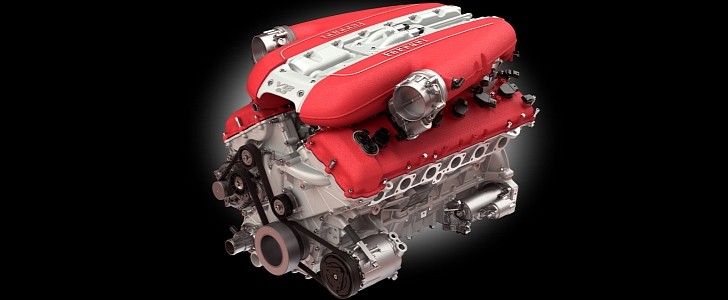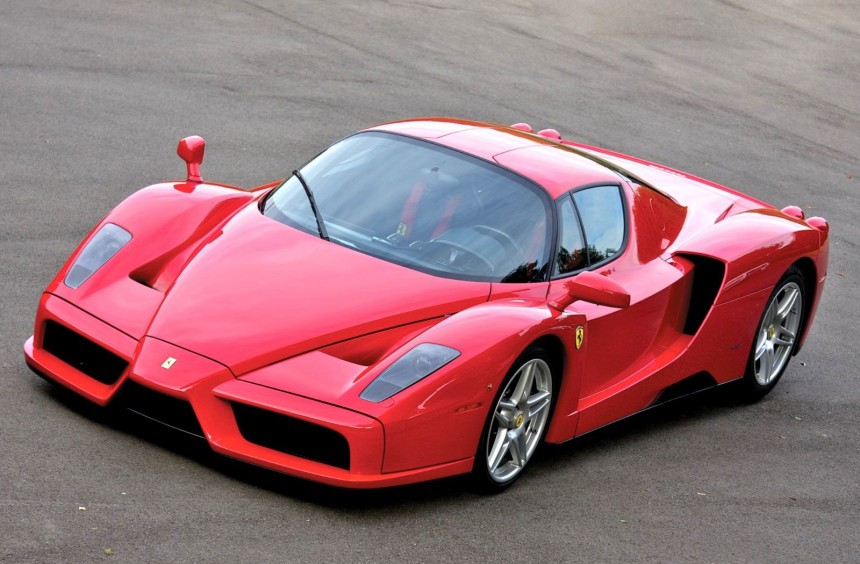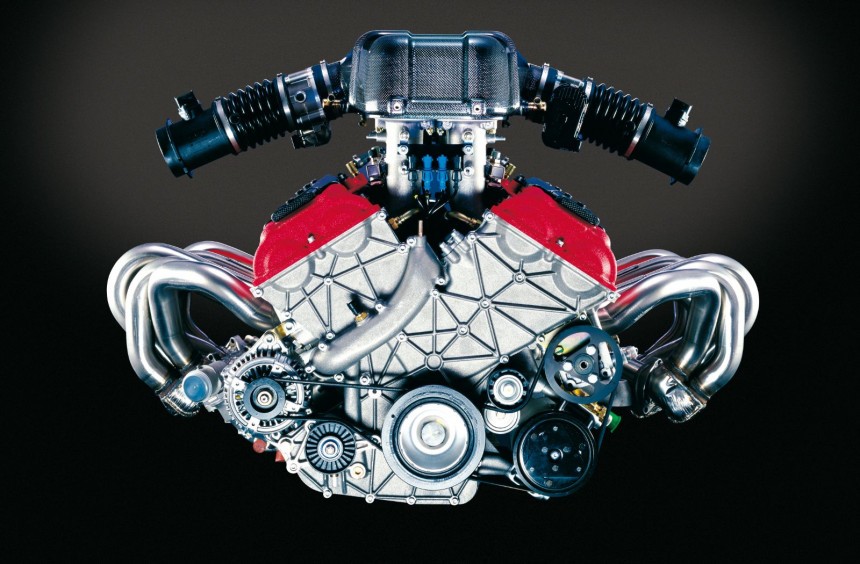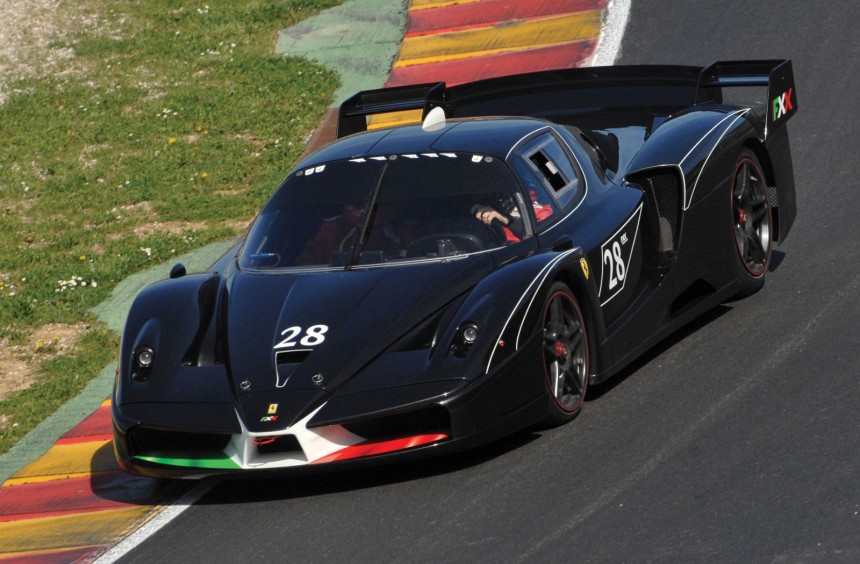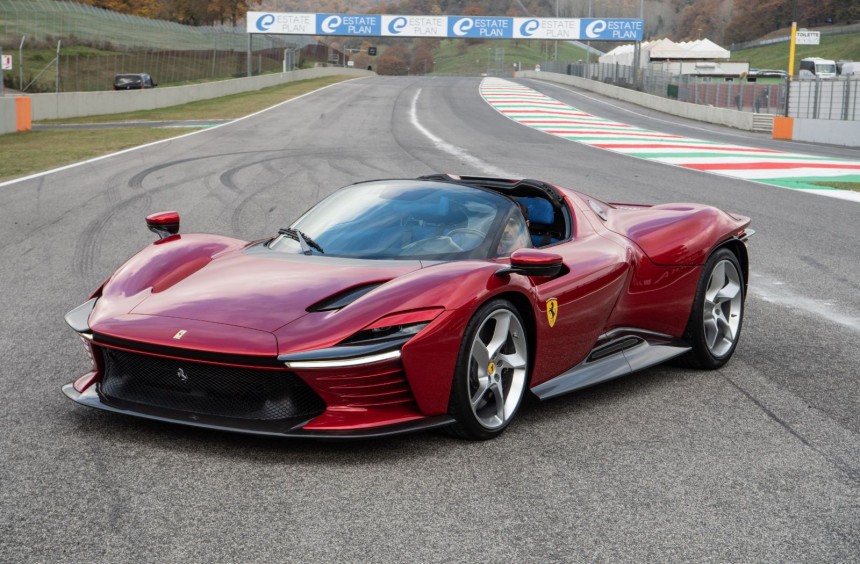While many carmakers have built some amazing V12s throughout the last century, the one that stands out is Ferrari. Some of the finest V-shaped, twelve cylinders ever created came out of Maranello, and the latest member of that legendary lineage is the F140, a modern engineering masterpiece.
Shortly after the Second World War ended, Italy's automotive industry was beginning to rise from its ashes. Among the car manufacturers that were getting back on their feet was Enzo Ferrari’s company, which began as Auto Avio Costruzioni in 1939 but took on its founder’s name in 1947.
That year, the first engine developed in-house by Ferrari was born. A 1.5-liter V12 named after its illustrious designer Gioacchino Colombo, the unit was created for Formula One use. It was successful from the start, helping the Prancing Horse win six out of fourteen races that year while mounted under the hood of the 125 S.
Two other V12s - one designed by Aurelio Lampredi, and the other by Vittorio Jano - were also used during the 1950s, but the Colombo was continually improved, outliving its sibling and powering some of the brand’s most famous machines until it was finally retired in 1988.
Of course, Ferrari also built many other outstanding motors with fewer cylinders but remained faithful to the V12 configuration for the majority of its flagship models. After discontinuing the Colombo, the Sceria created a series of Formula One units, but a new V12 intended for road cars would come in the early 1990s when the F116/F133 engine family debuted in the 1992 456 grand tourer.
At the 2002 Paris Motor Show, the company unveiled the latest iteration of its long line of limited-production, racecar-derived masterpieces, the Enzo Ferrari. The exquisite road-legal supercar with butterfly-opening doors came with a new twelve-cylinder codenamed Tipo F140 B.
A 6.0 liter, all-aluminum, 65-degree V12 with a dual overhead camshaft (DOHC) configuration, four valves per cylinder, variable valve timing, and a Bosch Motronic ME7 fuel injection system, the F140 was the most powerful naturally aspirated engine ever fitted into a road car. It could produce 651 hp at 7,800 rpm and 485 lb-ft (657 Nm) of torque at 5,500 rpm.
During that time, Ferrari was by far the most successful name in Formula One, and many of the technologies pioneered on the track made their way into the Enzo. However, unlike the F50’s Tipo F130B, this new V12 was not an F1-spec powerplant. In fact, its architecture was based on the F136 V8, and it didn't share any components with the V10s that helped Michael Schumacher become one of the best race drivers of all time.
That being said, it was created by the same masterminds behind the Formula One engines, and, as you’re about to read, it was capable of far more than 651 hp.
The supercar was produced in 400 examples until 2004, but its V12 continued to be developed. Along with the Enzo’s underpinnings, Maserati borrowed the unit for its MC12 homologation special, the resulting GT1 racecar, and the Pininfarina-designed Birdcage 75th concept. From 2004 to 2010, the MC12 GT1 entered various racing series, dominating most of them. This was the only instance where the F140 (M144B/2 in Maserati guise) was used in FIA-sanctioned competitions, proving that it was much more than a road car engine.
In 2005, Ferrari introduced the FXX, an Enzo-based track weapon with a bored-out version of its V12 dubbed F140 DA. In this configuration, it was able to spit out 789 hp and 506 lb-ft (686 Nm) of torque, the 6.3-liter, yet there was room for more, so in 2007 the FXX Evoluzione was unleashed. This time, the output was improved to 848 hp and 509 lb-ft (690 Nm) of torque, the most it could make unassisted by a kinetic energy recovery system (KERS). You can hear it scream around the Monza racetrack in the video below posted on YouTube by NM2255 Car HD Videos.
In road-legal form, the engine initially retained its original 6.0-liter displacement, branching out into two distinct units: the first was the slightly detuned, 612-hp F140 C used in the 599 GTB Fiorano (2006), while the second was the 599 GTO’s 661-hp F140 CE (2010).
Like the FXX variants, it was subsequently enlarged to 6.3-liters and produced in four output versions. The most powerful was used in the company’s first plug-in hybrid, the 2013 LaFerrari. On its own, the powerplant which bore the designation F140 FE could make 789 hp and 516 lb-ft (700 Nm) of torque, but those figures rose to 950 hp and 664 lb-ft (900 Nm) when the F1-derived KERS system was engaged.
As was the case with the Enzo, the LaFerrari was also transformed into a track monster with the introduction of the FXX-K (2014) and FXX-K Evo (2017). In these two ultra-rare models, peak power and torque stood at the same values as the previous-generation FXX, but with the help of KERS, they went up to 1,036 hp and 664 lb-ft (900 Nm).
The current 6.5-liter edition of the F140 began production in 2017, and just like its 6.3-liter sibling, it comprises four different output versions. Producing between 789 and 819 hp, three of these iterations can be found in the engine bays of the 812 grand tourers or the windshield-less Monza SP1 and SP2.
Just when we thought that Ferrari was giving up on non-electrified, V12-powered cars, the manufacturer announced the breathtaking, mid-engine Daytona SP3. Inspired by the sports-prototype racers that won the 1967 Daytona 24 Hours, it will be available in 2022 with an 828-hp twelve-cylinder, the fourth and most powerful street-legal version of the 6.5-liter F140.
In naturally aspirated guise, this amazing powerplant seems to have reached the end of the line. However, recent rumors state that the Italian carmaker plans to extend its lifespan with the help of turbocharging. Some say that the upcoming Purosangue SUV will offer such a mill, but no official information can back that up yet. Whether or not this is true, the F140 is certainly Ferrari’s last V12. It will soon celebrate twenty years since entering production and will go down in history as one of the greatest engines Ferrari has ever built.
That year, the first engine developed in-house by Ferrari was born. A 1.5-liter V12 named after its illustrious designer Gioacchino Colombo, the unit was created for Formula One use. It was successful from the start, helping the Prancing Horse win six out of fourteen races that year while mounted under the hood of the 125 S.
Two other V12s - one designed by Aurelio Lampredi, and the other by Vittorio Jano - were also used during the 1950s, but the Colombo was continually improved, outliving its sibling and powering some of the brand’s most famous machines until it was finally retired in 1988.
Of course, Ferrari also built many other outstanding motors with fewer cylinders but remained faithful to the V12 configuration for the majority of its flagship models. After discontinuing the Colombo, the Sceria created a series of Formula One units, but a new V12 intended for road cars would come in the early 1990s when the F116/F133 engine family debuted in the 1992 456 grand tourer.
A 6.0 liter, all-aluminum, 65-degree V12 with a dual overhead camshaft (DOHC) configuration, four valves per cylinder, variable valve timing, and a Bosch Motronic ME7 fuel injection system, the F140 was the most powerful naturally aspirated engine ever fitted into a road car. It could produce 651 hp at 7,800 rpm and 485 lb-ft (657 Nm) of torque at 5,500 rpm.
During that time, Ferrari was by far the most successful name in Formula One, and many of the technologies pioneered on the track made their way into the Enzo. However, unlike the F50’s Tipo F130B, this new V12 was not an F1-spec powerplant. In fact, its architecture was based on the F136 V8, and it didn't share any components with the V10s that helped Michael Schumacher become one of the best race drivers of all time.
The supercar was produced in 400 examples until 2004, but its V12 continued to be developed. Along with the Enzo’s underpinnings, Maserati borrowed the unit for its MC12 homologation special, the resulting GT1 racecar, and the Pininfarina-designed Birdcage 75th concept. From 2004 to 2010, the MC12 GT1 entered various racing series, dominating most of them. This was the only instance where the F140 (M144B/2 in Maserati guise) was used in FIA-sanctioned competitions, proving that it was much more than a road car engine.
In 2005, Ferrari introduced the FXX, an Enzo-based track weapon with a bored-out version of its V12 dubbed F140 DA. In this configuration, it was able to spit out 789 hp and 506 lb-ft (686 Nm) of torque, the 6.3-liter, yet there was room for more, so in 2007 the FXX Evoluzione was unleashed. This time, the output was improved to 848 hp and 509 lb-ft (690 Nm) of torque, the most it could make unassisted by a kinetic energy recovery system (KERS). You can hear it scream around the Monza racetrack in the video below posted on YouTube by NM2255 Car HD Videos.
Like the FXX variants, it was subsequently enlarged to 6.3-liters and produced in four output versions. The most powerful was used in the company’s first plug-in hybrid, the 2013 LaFerrari. On its own, the powerplant which bore the designation F140 FE could make 789 hp and 516 lb-ft (700 Nm) of torque, but those figures rose to 950 hp and 664 lb-ft (900 Nm) when the F1-derived KERS system was engaged.
As was the case with the Enzo, the LaFerrari was also transformed into a track monster with the introduction of the FXX-K (2014) and FXX-K Evo (2017). In these two ultra-rare models, peak power and torque stood at the same values as the previous-generation FXX, but with the help of KERS, they went up to 1,036 hp and 664 lb-ft (900 Nm).
The current 6.5-liter edition of the F140 began production in 2017, and just like its 6.3-liter sibling, it comprises four different output versions. Producing between 789 and 819 hp, three of these iterations can be found in the engine bays of the 812 grand tourers or the windshield-less Monza SP1 and SP2.
In naturally aspirated guise, this amazing powerplant seems to have reached the end of the line. However, recent rumors state that the Italian carmaker plans to extend its lifespan with the help of turbocharging. Some say that the upcoming Purosangue SUV will offer such a mill, but no official information can back that up yet. Whether or not this is true, the F140 is certainly Ferrari’s last V12. It will soon celebrate twenty years since entering production and will go down in history as one of the greatest engines Ferrari has ever built.
